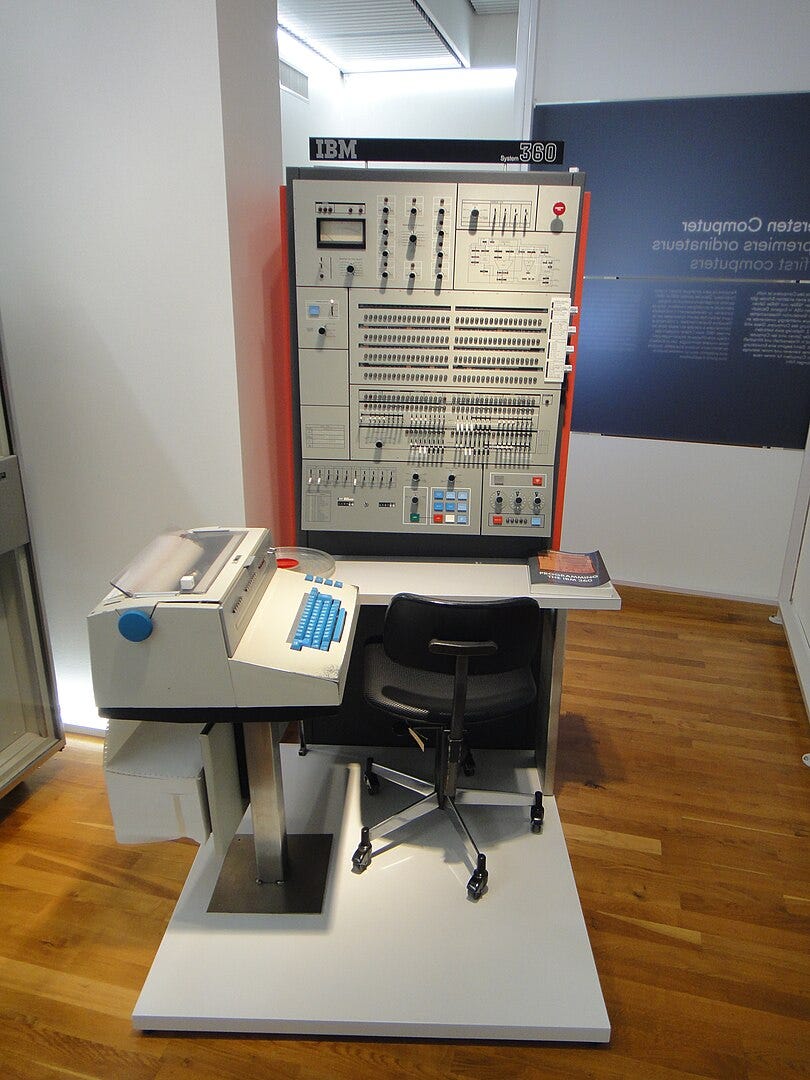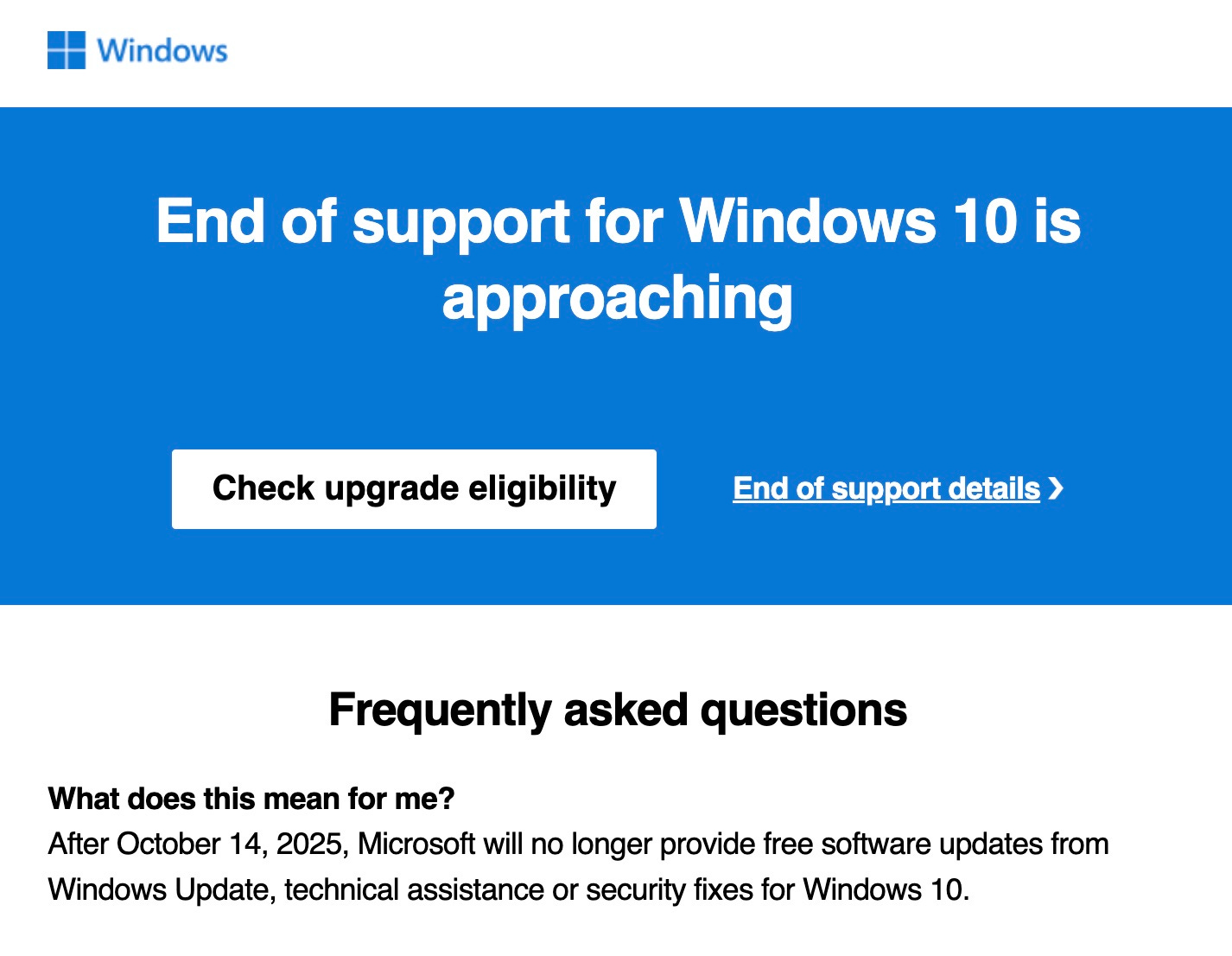Thanks for reading The Chip Letter. Note this is a part-free and part paid post where we discuss what we mean by ‘legacy’ systems and, after the paywall, DOGE’s efforts at the US Social Security Administration.
life←{⊃1 ⍵ ∨.∧ 3 4 = +/ +/ 1 0 ¯1 ∘.⊖ 1 0 ¯1 ⌽¨ ⊂⍵}Almost three decades ago, I came across a comment in an APL program running on an IBM mainframe1:
I’ve no idea what this code does. It seems to work though, so I’m going to leave it be.
I can still remember my, slightly visceral, reaction. That can’t be right. Surely, if the code is so obscure, then we need to refactor it.
However, I knew, by repute, the person who’d written that comment. That reputation was that he was exceedingly bright. I also understood that he was a much, much better APL programmer than me. I concluded that he knew better than me on this particular decision.
After around sixty seconds of thought I decided to follow his example, and leave it be.
I still feel a little guilty about this.
I was reading the APL program because APL had been deemed to be a ‘legacy’ system at the firm where I worked. I’d been given the job of transferring the functionality it provided it into a proprietary software package running on PCs.
Talking of PCs, a few days ago the following email arrived in my inbox.
This is Windows 10 running on my Microsoft Surface laptop, purchased all the way back in …. 2019.
Is this the same Windows 10 that a Microsoft spokesman talked about as follows?
Windows 10 is going to be the last major version of the operating service (OS), according to a Microsoft developer.
Speaking at the company’s Ignite conference this week, developer evangelist Jerry Nixon said: "Right now we’re releasing Windows 10, and because Windows 10 is the last version of Windows, we’re all still working on Windows 10."
Instead of new major versions, the product will be improved in regular instalments and automatic updates, much akin to apps and modern browsers. Source
Windows 11 was released in October 2021, so some users will have had precisely four years of support for Windows 10. Plus four years of being ‘encouraged’ to ‘upgrade’ to Windows 11.
In fairness to Microsoft, we all change our plans from time to time. I’ve not heard of any major problems running legacy Windows software on Windows 11. Microsoft needs to save some pennies to pay for more AI datacenters.
Still six years of support seems a little short?
Back to my mainframe APL to PC conversion: I’m sorry to report that it failed.
Not because I didn’t get the PC version working. I did. It was reasonably well tested too.
Rather, because the program was so business critical, that there was no appetite to make the switch. The value of the company literally rested on the results generated by this program.
My employer was willing to fund me to create a new version. It wasn’t willing to ‘pull the plug’ on the working, tried and tested, APL version. The benefits of the PC version weren’t large enough to offset the risks.
Today, the proprietary PC software package I used is still around and, as far as I know, fully supported. That’s pure luck though. Many competing packages from that era have fallen by the wayside as they were abandoned by their owners.
I’m willing to bet though that the original APL program still works and runs on the latest IBM mainframes. APL is no longer supported by IBM. Instead, since 2021, it’s been supported by Log-On software and it runs on both IBM’s z/OS and Windows.
z/OS runs on the latest versions of IBM’s mainframes, descendants of System/360.
IEEE Explore has a terrific post on the development of the IBM System/360 mainframe.
Was the 1964 System/360 launch really ‘the most successful product launch of all time’? Well, orders were taken in one month for five times the total of all installed computers in the US, Europe and Japan.
In the first month following the S/360 announcement, customers worldwide ordered over 100,000 systems. To put that number in perspective, in that same year in the United Kingdom, all of Western Europe, the United States, and Japan, there were slightly more than 20,000 computers of any kind installed.
IBM took huge risks with the creation of S/360 and those risks paid off. The new system truly made IBM.

Sixty years later, IBM is still making leading edge mainframe processors. At Hot Chips 2024 the company announced Telum II:
Developed using Samsung 5nm technology, the new IBM Telum II processor will feature eight high-performance cores running at 5.5GHz. Telum II will include a 40% increase in on-chip cache capacity, with the virtual L3 and virtual L4 growing to 360MB and 2.88GB respectively. The processor integrates a new data processing unit (DPU) specialized for IO acceleration and the next generation of on-chip AI acceleration. These hardware enhancements are designed to provide significant performance improvements for clients over previous generations.
Chips and Cheese has a couple of terrific posts on Telum II.
The Dave’s Garage YouTube Channel has a fascinating video on IBM’s recent Z16 mainframe including a section on the features that make them relevant today:
Let's have a final look then at why the main frame is still relevant and where it holds the upper hand over more pedestrian datacenter systems.
First there's unparalleled reliability mainframes especially models like the IBM Z16 are renowned for their reliability they can achieve up to seven nines of availability. In practical terms this means just milliseconds of downtime annually such reliability is crucial for Mission critical applications where even a brief outage can have significant consequences …
Mainframes come equipped with robust security features ensuring that data remains protected and that system disruptions due to security breaches are minimized. Only about one tenth of 1% of mainframe customers ever experience a breach, a number that can be significantly higher on commodity systems. Mainframes like the Z16 can even encrypt main memory and they do it with Quantum safe algorithms so that even if you took a snapshot of a memory page today a quantum computer still won't be able to crack it 50 years from now.
That sounds pretty useful, if likely eye-wateringly expensive.
So IBM’s mainframe hardware today doesn’t seem like it deserves to be called ‘legacy’.
Which brings us the main topic of this post: DOGE’s widely reported efforts at the Social Security Administration (SSA). If IBM’s hardware isn’t outdated, just why do DOGE want to move off these systems?







